Introduction
Amortization is more than just an accounting term; it is a fundamental financial strategy that can significantly impact a company's bottom line. By effectively managing the amortization of both intangible assets and loans, organizations can enhance their cash flow, optimize tax obligations, and improve financial forecasting. This article delves into the various types of amortization, how to calculate it, and the critical distinctions between amortization and depreciation.
It also highlights the benefits and tax implications associated with amortization, providing actionable insights for finance professionals aiming to leverage these concepts for strategic advantage. Understanding these elements is vital for making informed decisions that drive financial performance in an increasingly complex economic landscape.
Types of Amortization
Amortization is mainly categorized into two important types: the amortization of intangible resources and the amortization of loans.
-
Amortization of Intangible Resources: This process involves the gradual write-off of intangible resources, such as patents, trademarks, and copyrights, over their estimated useful life. This systematic method not only aids in precisely representing the worth of the resource on the balance sheet but also offers a clearer view of the organization's economic condition. For example, a company may hold a patent with a useful life of 10 years, allowing it to amortize the asset annually, reducing its book value and impacting the income statement through expense recognition.
-
Amortization of Loans: This refers to the structured repayment of loan principal through regular payments, which aids in managing interest expenses effectively. Each payment typically consists of both principal and interest components, gradually reducing the loan balance until it is fully paid off. This method is crucial for maintaining liquidity and ensuring that a business can meet its monetary obligations without incurring additional debt. For example, a company that secures a $100,000 loan with a 5% interest rate over 10 years will find its cash flow management affected substantially by the repayment plan, enabling more reliable budgeting.
Grasping these categories of repayment schedules is crucial for budget forecasting and evaluation, as each influences cash flow, tax responsibilities, and overall monetary strategy. Moreover, distinguishing between them can aid organizations in making informed decisions regarding resource allocation and investment strategies.
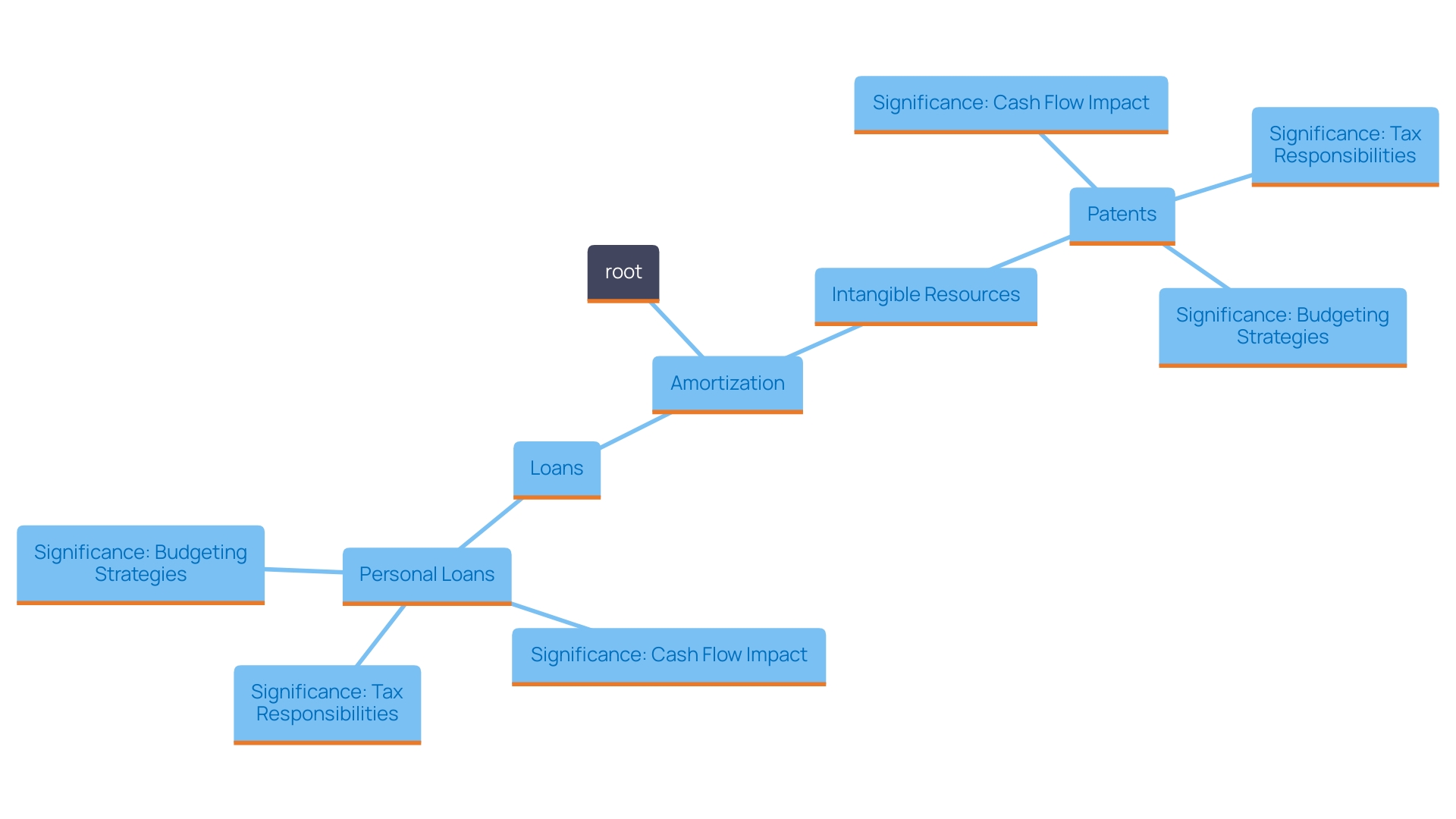
Amortization of Intangible Assets
Intangible resources, including copyrights and goodwill, play an important role in the economic environment of any organization, necessitating careful consideration of their amortization. Amortization expenses are systematically recorded on the income statement, effectively reducing taxable income and reflecting the gradual consumption of these resources over time. This practice aligns monetary reporting with the economic realities of resource depreciation, ensuring that businesses accurately represent their fiscal position.
In 2022, a notable case highlighted the impact of changing monetary strategies on property classification. A bank reclassified its private corporate bonds from 'held to collect and sell' to 'held to collect', transitioning them to the amortized cost category. This decision not only eliminated significant net losses from its equity but also modified the fair value of the bonds, showcasing the dynamic nature of resource management and reporting. Such adjustments are essential in a fluctuating market where the value of intangible assets can significantly influence overall economic well-being.
Moreover, the Federal Reserve Board's recent announcements concerning monetary programs emphasize the significance of preserving clarity in reporting as institutions adjust their strategies in response to changing economic conditions. As companies maneuver through these complexities, grasping the fundamental elements of debt repayment becomes crucial for efficient financial planning and risk management.
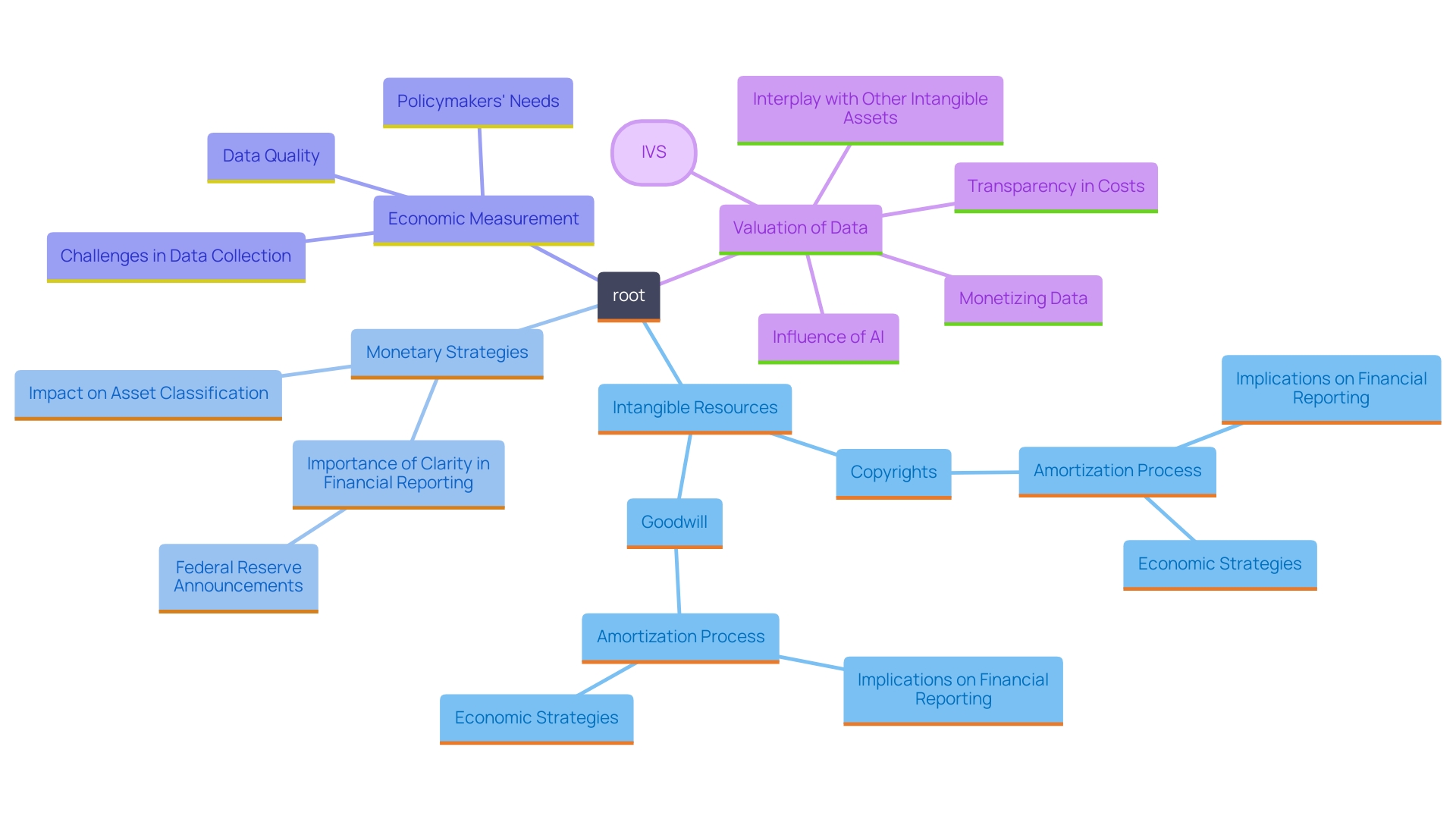
Calculating Amortization
Determining amortization includes several essential elements: the item's initial cost, its useful life, and any anticipated residual value at the conclusion of its life. For non-physical resources, the straight-line method is predominantly utilized. This approach evenly distributes the asset's cost over its useful life, ensuring a straightforward reflection of expense on the income statement. For instance, if a software license costs $10,000 and has a useful life of 5 years with no residual value, the yearly depreciation expense would be $2,000.
In the case of loans, a repayment plan becomes essential. This schedule details each payment's breakdown between interest and principal, offering a transparent view of how the loan balance decreases over time. For example, with a $100,000 loan at a 5% interest rate over 15 years, the monthly payment is approximately $790. Over the loan's term, the amortization schedule will illustrate how the majority of early payments cover interest, gradually shifting towards principal repayment as the loan matures.
Grasping these techniques is vital, particularly in the framework of managing capital resources that symbolize substantial investments for organizations. 'According to recent reports, effective capital planning and resource management are vital for maintaining community vitality and optimizing resource stewardship.'. As monetary leaders navigate these complexities, they must remain informed about best practices in amortization and resource management to ensure strategic investments yield sustainable returns.
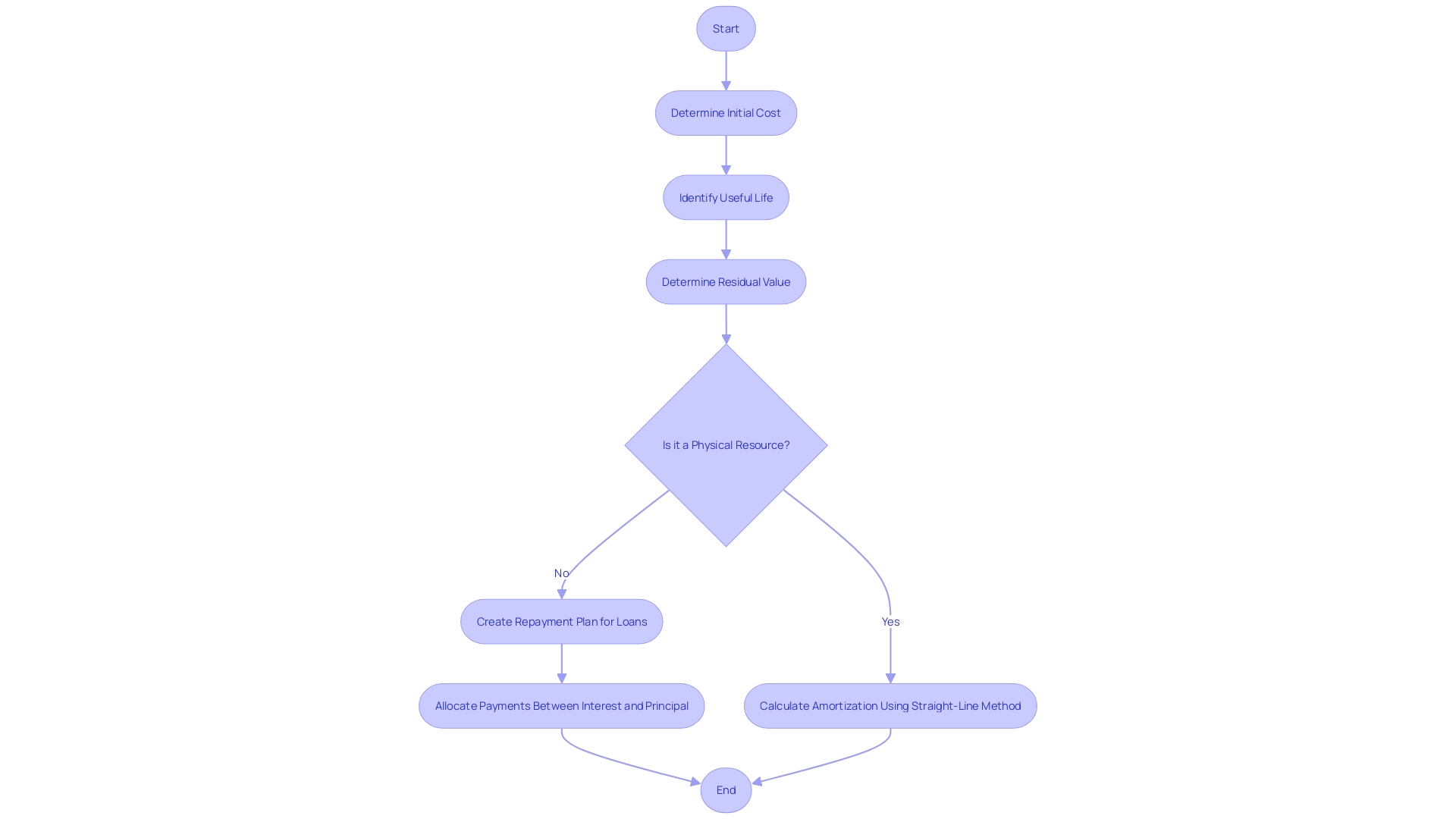
Amortization vs. Depreciation
Amortization and depreciation are essential concepts in managing finances, both of which involve the systematic allocation of costs over time. However, they apply to distinct resource categories, making it crucial for financial reporting and strategic decision-making.
Amortization specifically relates to intangible resources, such as patents, trademarks, and copyrights. These resources have limited useful durations, and amortization distributes their expense over these intervals. This process ensures that the financial statements accurately represent the value of the resource and the company’s true financial position.
Conversely, depreciation is important for physical properties such as machinery, buildings, and vehicles. Depreciation techniques, including straight-line and declining balance, establish how the expense is acknowledged over the item's useful life. This distinction not only affects the income statement but also has implications for cash flow and tax reporting.
Understanding the nuances between these two forms of cost allocation is vital. For instance, companies must decide whether to categorize certain expenses directly to the profit and loss statement (PNL) or the balance sheet, based on the materiality and expected lifespan of the asset. This decision affects the overall economic health and operational efficiency of the business.
Additionally, recent revisions in monetary regulations, such as the International Standard on Auditing for Audits of Financial Statements of Less Complex Entities, have consequences for how allocation of costs and depreciation are handled in smaller organizations. These guidelines aim to enhance transparency and ensure that reporting accurately reflects a company's economic reality.
In summary, a clear understanding of amortization and depreciation is not just an accounting necessity but also a strategic imperative for assessing a company’s economic performance and stability.
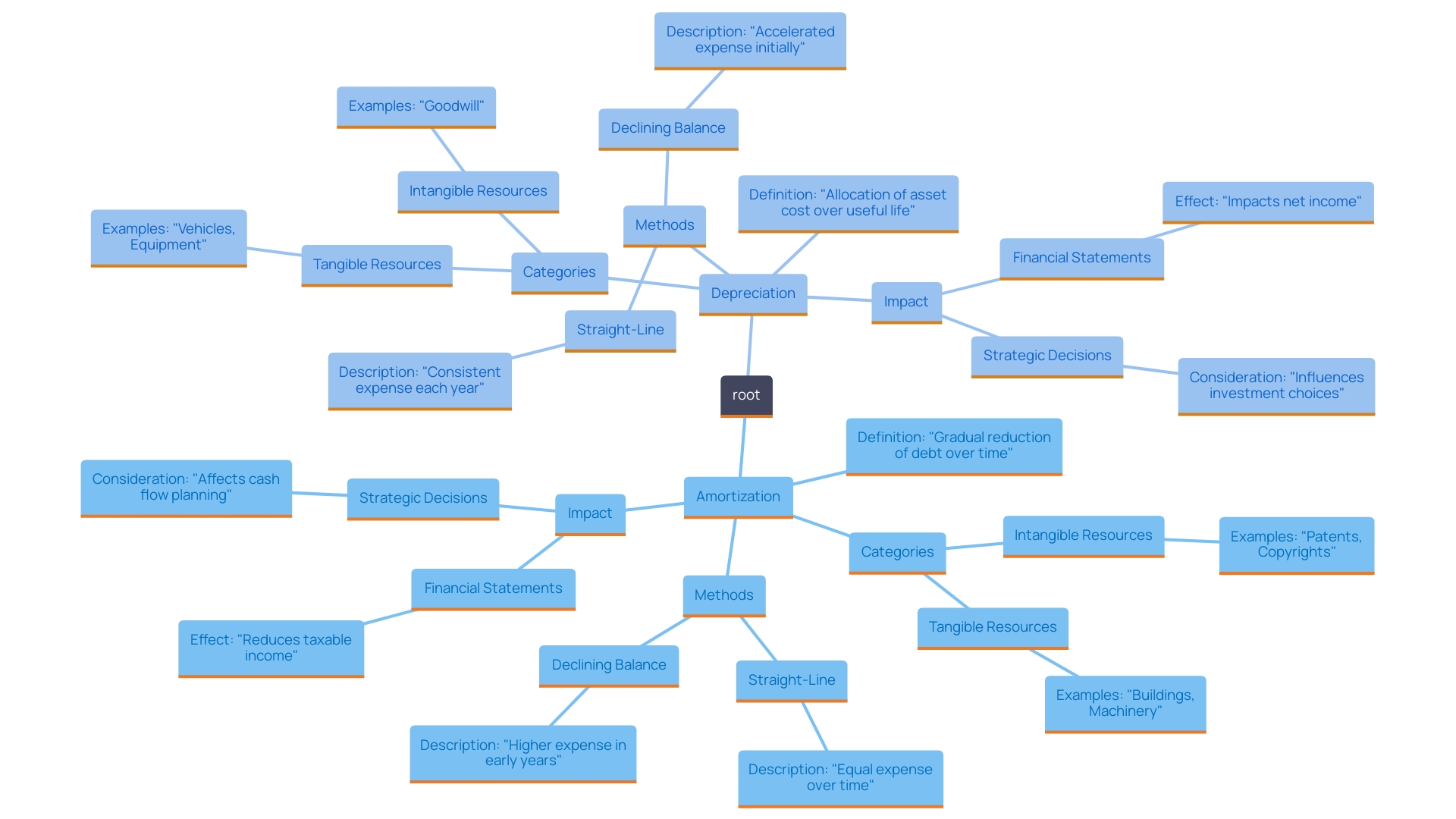
Benefits of Amortization
Amortization acts as a strategic monetary tool that offers several benefits, particularly in cash flow management and tax optimization. By distributing the cost of an asset over its estimated useful life, companies can circumvent hefty initial expenditures, ultimately enhancing their liquidity. This gradual distribution of expenses not only alleviates the economic burden in the short term but also aligns with sound cash management practices, allowing businesses to allocate resources more effectively across their operations.
Furthermore, the expense of loan repayment plays an essential role in decreasing taxable income. As outlined by financial experts, this reduction can lead to significant savings on tax liabilities, benefitting the overall financial health of an organization. For instance, as Vlad Rusz, a CPA at Centaur Digital Corp, points out, tax planning often emphasizes long-term benefits. However, the immediate tax benefits derived from amortization can be critical, especially in high-income years where tax strategies must be diligently evaluated.
To illustrate the practical implications, consider the case of companies utilizing cost segregation strategies. By accelerating depreciation through cost segregation, businesses can optimize their cash flow even further. This practice allows for a greater proportion of the resource's value to be depreciated in the early years, thereby freeing up capital for reinvestment or operational needs. Typically, businesses can shift 15% to 35% of a property's depreciable basis to a shorter recovery period of 5 to 15 years, thus enhancing their liquidity during crucial early years of asset ownership.
In summary, this process is not merely a compliance measure but a dynamic aspect of financial strategy that can lead to improved cash flow and reduced tax liabilities, ultimately contributing to the sustainable growth of a business.
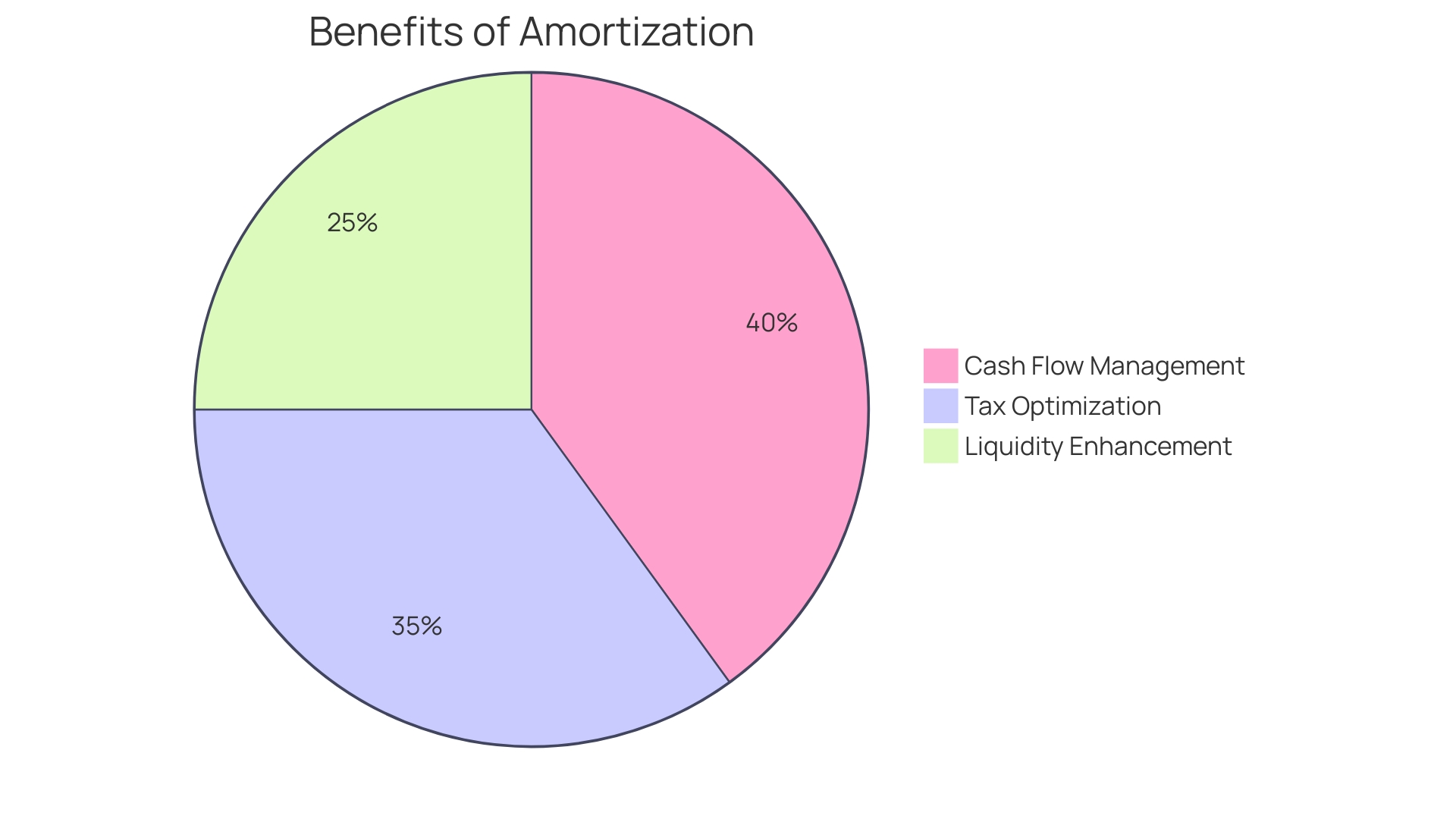
Tax Implications of Amortization
The gradual reduction of debt plays a pivotal role in shaping a company’s tax strategy, allowing businesses to deduct these expenses from their taxable income. This deduction can significantly diminish the overall tax burden, translating into enhanced cash flow and profitability. In the current economic climate, where high inflation and market volatility are prevalent, understanding the intricate rules governing loan repayment is essential for finance professionals.
Tax regulations, including those established by the Tax Cuts and Jobs Act of 2017, affect how businesses handle the allocation of costs. For instance, the law has constrained the deductibility of certain expenses, making it crucial for organizations to stay informed about potential changes that could affect their tax positions. As highlighted in recent discussions about tax relief proposals, businesses must be prepared to adapt their strategies accordingly.
Additionally, utilizing depreciation effectively can coincide with wider monetary objectives. Companies can utilize amortization not only to reduce taxable income but also as a strategic tool to enhance investment decisions. For example, those in real estate can benefit from depreciation methods that allow for accelerated deductions, thus improving cash flow.
Staying ahead of the curve involves collaborating with tax advisors who can provide insights into the latest regulatory changes and help identify optimal strategies for deduction. This proactive approach not only ensures compliance but also maximizes tax benefits, enabling firms to better navigate the complexities of the financial landscape.
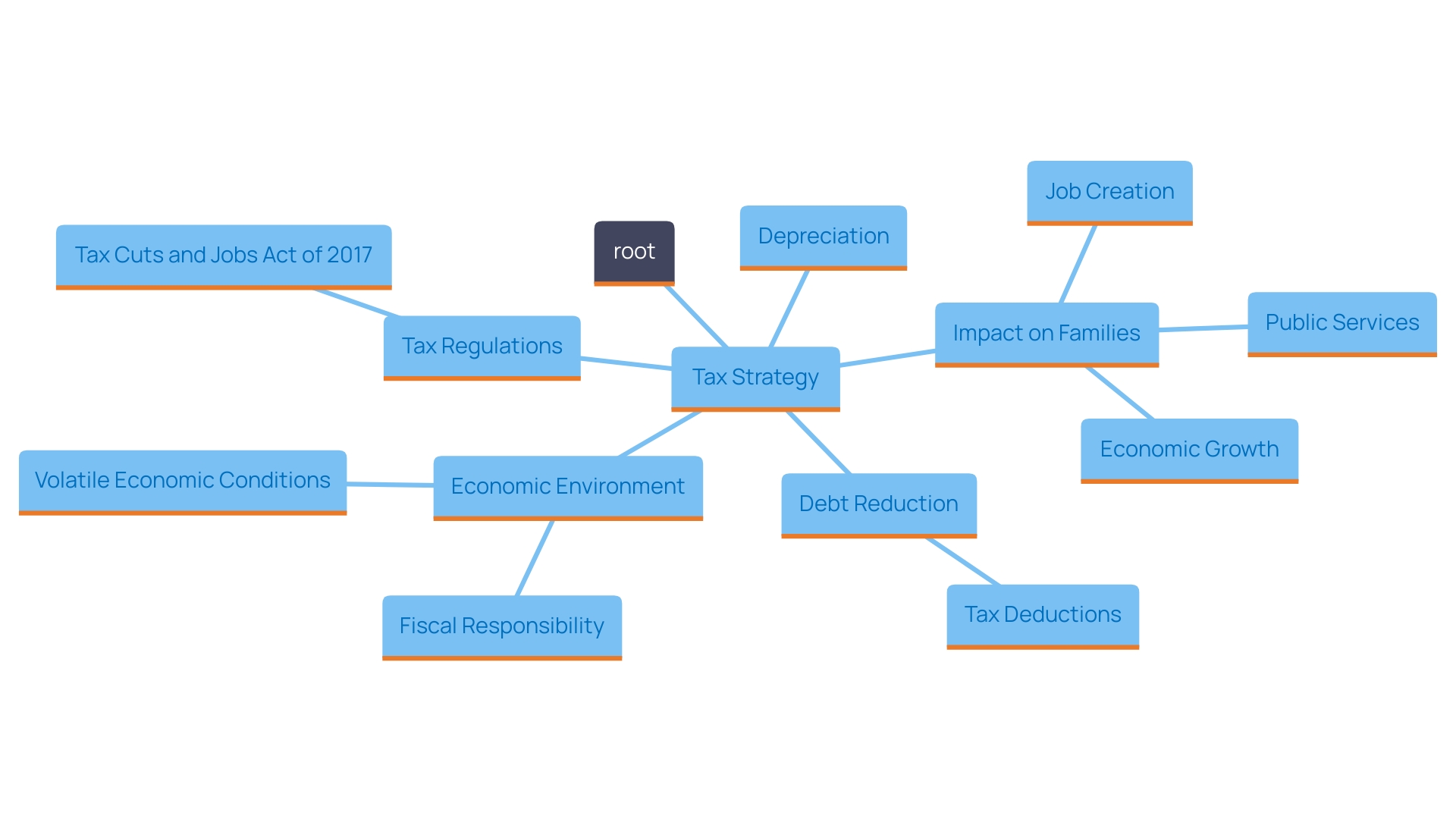
Conclusion
The exploration of amortization reveals its critical role as a financial strategy that extends beyond mere accounting practices. By effectively managing the amortization of both intangible assets and loans, organizations can significantly enhance cash flow, optimize tax obligations, and improve financial forecasting. Understanding the distinctions between the amortization of intangible assets and loans is essential for informed decision-making, as these elements directly impact an organization's financial health.
The benefits of amortization are manifold, particularly in the realms of cash flow management and tax optimization. By distributing costs over the useful life of assets, companies can alleviate immediate financial burdens while simultaneously benefiting from tax deductions that enhance profitability. This strategic approach not only supports liquidity but also empowers organizations to allocate resources more efficiently, reinforcing their overall financial strategy.
Moreover, the implications of recent tax regulations and the evolving landscape of financial standards underscore the necessity for finance professionals to remain vigilant. Staying informed about the latest developments enables businesses to adapt their amortization strategies effectively, ensuring compliance while maximizing potential tax benefits. Emphasizing proactive collaboration with tax advisors can further enhance an organization’s financial positioning, paving the way for sustainable growth in an increasingly complex economic environment.




